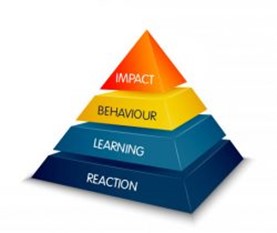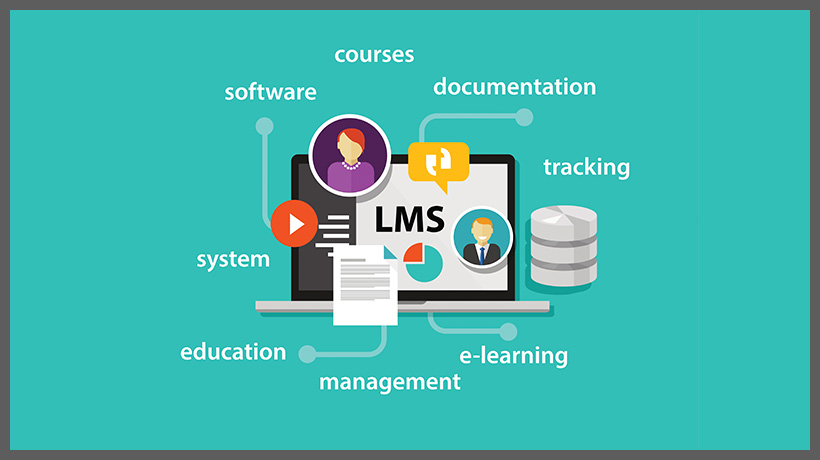
To determine the ROI of your training, you need to measure its impact on both learners and business. This article offers insights on a set of practical cues that can be used to measure the business impact of your training and development programs.
Background
Organizations make steady investments in training and development programs every year. With COVID-19 and the changed workplace dynamics, the work from home mode has led organizations to make significant investments in rapid virtual training.
As a result, today—more than ever—there is a need to assess the business impact of these trainings. These insights can help organizations determine which training and development programs are aligned to the business goals and update/modify the ones that aren’t.
What Are the Inherent Challenges in Measuring the Business Impact of Your Training and Development Programs?
While there is no debate on the need to measure the business impact of the corporate training and development programs, there are several inherent challenges in this exercise. The key factor being that there is no easy way to obtain analytics that can measure the business impact.
The L&D teams are constrained by the fact that the standard reports from the LMS are not able to measure the impact. Even if they know what should be done, they often do not have the resources (team and tools) to collate the additional data, analyze it, and draw actionable insights.
On account of this, this exercise either never gets attempted or takes an inordinately long time. By the time the insights come in, it may be too late for the business to apply them. As a result, you are likely to see that the training investment in a given financial year may not impact the business goals in the same year, as planned.
What Should Be the Way Forward to Help You Measure the Business Impact of Your Training and Development Programs?
The first correction needs to be done at the beginning of the exercise, that is, during the Training Needs Analysis (TNA) phase. Typically, at this stage, the metrics that will be used to determine the training effectiveness and impact is established.
L&D teams typically look at the following metrics:
- The number of training registrations and completion rates.
- Learner reaction/feedback on the training/the trainer.
- Assessment scores (to assess training effectiveness).
However, the crucial missing link is the Business metrics – that is, by making a specific training investment, how will the business see a specific gain that will influence/impact the business goals.
The correct way forward is in combining the evaluation through L&D metrics as well as business metrics. The focus on the L&D metrics alone is inadequate in helping you get the impact on business. Only when you couple them, you will be able to determine the impact of the training on business.
Take a look at this example to understand the value you get as you couple both L&D and business metrics.
Background: An organization invests in an enterprise-wide CRM tool for their Sales and Marketing teams. The new tool is planned to replace the multiple legacy tools and Excel-based trackers over a short period of 6 months.
Training need: The entire Sales and Marketing team needs to undergo training for the new CRM tool. The L&D team maps the training to the following profiles:
Set 1: Sales Executives, Sales Managers, and Head of Sales – Maps to acquiring three levels of tool proficiency.
Set 2: Marketing team.
Set 3: CEO and COO – Dashboard review – with a focus on analysis and actionable insights.
The L&D team plans the training modules to achieve the required proficiency levels, across the three audience profiles. The assessment scores are the selected indicators to validate the proficiency gain.
The Missing Business Metrics: What wasn’t discussed with the business (Sales and Marketing teams) was that once the team members have the requisite proficiency in the new tool, what is the anticipated business gain, and how should it be measured?
For instance, the Sales reps will save 1 hour/day once they move to the new tool (instead of wading through multiple Excel trackers) and this time could be used to step up their target by 12.5%.
Now, this impacts the business directly and is a great way to ascertain the impact of the planned CRM training on business.
Remember: If this collaborative quantification (coupling of L&D metrics and business metrics) isn’t done upfront in the project, it would be impossible to track and measure the business impact of the training. This exercise (to couple the L&D metrics with the business metrics) needs a strong collaboration between the L&D team and the business team. During the TNA phase, the parameters that can help ascertain the business impact of the training must be identified.
How Can You Measure the Business Impact of Your Training and Development Programs?
A good approach is the adaptation of the Kirkpatrick’s model of training evaluation to measure not only training effectiveness but also its impact on business. Take a look at how this can be done.

Level 1: Reaction
Objective: The exercise begins with ascertaining the learners’ reaction. Typical insights sought are if the learners found the training to be relevant, engaging, and easy to internalize and apply.
How is this done: This is typically done through polls and online surveys.
From an evaluation perspective, this feedback allows L&D teams to confirm that the basic goals have been met and if there are any gaps, they should be addressed through remediation/additional intervention.
Level 2: Learning
Objective: At this stage, the validation is done if the training’s learning outcomes were met.
How is this done: The right assessment strategy is critical in determining if the required cognition levels were met. Hence, the key measure at this stage are the scores of the summative assessment.
From an evaluation perspective, this feedback allows L&D teams to measure if the training met the required learning outcomes. If any gaps are identified, the required action (reinforcement, remediation, or providing supplementary learning aids) can be taken.
Level 3: Behavior
Objective: At this stage, the validation is done if there is a change in the learner behavior that is directly attributable to the training.
How is this done: This is typically done by polling the learners and their supervisors after 30/60/90 days, and a validation of the required gain is done. The gain is measured through a combination of L&D metrics and, more specifically, business metrics.
From an evaluation perspective, this feedback is the crucial validation of internalization of learning and its application on the job as well as its ability to trigger a behavioral change.
Level 4: Impact
Objective: At this stage, a validation is done if the training created the required value for business and was able to impact the business KPIs.
How is this done: This is done by tracking the parameters captured in the business metrics.
From an evaluation perspective, this feedback provides the crucial validation that the business impact goal was met.
Determining the business impact of your training and development programs is a complex exercise – with several inherent challenges. Hope this article provides easy to apply cues that you can use to effectively measure the business impact of your trainings.



